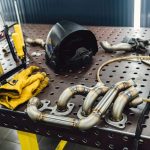Driving on UK roads presents unique challenges, especially with the ever-changing weather conditions, narrow lanes, and varied traffic patterns. Ensuring the proper functioning of your vehicle’s lane-keeping assist system is crucial for both safety and efficiency. Lane-keeping assist (LKA) technology is designed to help you stay within your lane by providing corrective steering inputs or warnings when you unintentionally drift out. However, like any advanced automotive technology, it requires proper maintenance and understanding to function optimally. This article will delve into the steps you can take to ensure your LKA system works effectively on UK roads.
Understanding Lane-Keeping Assist Technology
Lane-keeping assist systems are an integral part of modern vehicles, especially those aimed at enhancing driver safety. Before diving into the specifics of ensuring its proper functioning, it’s essential to understand how this technology works.
Also to see : Exploring the Impact of Vehicle Load on Braking Performance on UK Downhill Roads
LKA systems use a combination of cameras, sensors, and software to detect lane markings on the road. These systems monitor your vehicle’s position relative to the lane lines and either provide corrective steering input or issue warnings if you drift out of your lane without signaling. The technology is designed to intervene in scenarios where you might be distracted or fatigued, thereby reducing the risk of accidents.
To ensure the LKA system functions properly, you need to keep the sensors and cameras clean, maintain the vehicle’s alignment, and stay updated with software updates. Regular checks will help you avoid potential pitfalls and optimize the system’s performance. Remember, an efficiently working LKA system can be a life-saver on the busy and often unpredictable roads of the UK.
Also to read : What is the importance of maintaining proper fluid levels in a hybrid vehicle for ensuring safety?
Regular Maintenance and Care for Sensors and Cameras
To keep your lane-keeping assist system operating smoothly, begin with regular maintenance of the sensors and cameras. These are the eyes and ears of your LKA system and need to be in top condition to function correctly.
Cleanliness is Key
Dirt, grime, and even bug splatter can obstruct the camera lenses and sensors, leading to impaired performance. Regularly clean these components with a microfiber cloth and a gentle cleaning solution. Avoid using abrasive materials that could scratch the lenses.
Regular Inspections
Make it a habit to inspect your vehicle’s sensors and cameras periodically. Look for any signs of damage or misalignment. If you notice anything unusual, consult a professional technician for a thorough check-up.
Software Updates
Manufacturers frequently release software updates to enhance the performance and accuracy of lane-keeping assist systems. Ensure your vehicle’s software is up-to-date by visiting your dealership or authorized service center. These updates can include improvements in lane detection algorithms and better integration with other vehicle systems.
Professional Calibration
After any significant repairs or alterations to your vehicle, such as replacing the windshield or realigning the wheels, it’s crucial to have the LKA system recalibrated by a professional. This ensures that the sensors and cameras are correctly aligned and can accurately detect lane markings.
By maintaining the cleanliness and alignment of your sensors and cameras, you can significantly enhance your lane-keeping assist system’s performance, making your drives safer and more comfortable.
Adapting Driving Habits for Optimal Lane-Keeping Assist Performance
While technology plays a significant role in lane-keeping assist systems, your driving habits also impact their effectiveness. Adopting certain practices can help ensure that the LKA system functions as intended.
Consistent Lane Positioning
One of the key aspects of lane-keeping assist systems is their reliance on clear lane markings. By maintaining a consistent lane position, you make it easier for the system to detect the lane lines accurately. Avoid frequent lane changes or drifting within your lane, as this can confuse the system.
Use of Turn Signals
Lane-keeping assist systems are designed to intervene only when you unintentionally drift out of your lane. Using your turn signals when changing lanes or merging helps the system understand your intentions and prevents unnecessary alerts or interventions.
Adhering to Speed Limits
Driving at excessive speeds can reduce the effectiveness of your lane-keeping assist system. Higher speeds give the system less time to react and provide corrective inputs. Adhering to speed limits not only ensures your safety but also allows the LKA system to function optimally.
Avoiding Aggressive Driving
Aggressive driving behaviors, such as sudden lane changes or sharp turns, can hinder the performance of lane-keeping assist systems. Smooth and controlled driving movements make it easier for the system to detect and respond to lane markings.
By adopting these driving habits, you can create an environment where the lane-keeping assist system can perform at its best, contributing to a safer driving experience on UK roads.
Understanding Limitations and Challenges
Lane-keeping assist systems are sophisticated, but they are not infallible. Understanding the limitations and challenges of these systems can help you use them more effectively and avoid potential issues.
Weather Conditions
Adverse weather conditions, such as heavy rain, fog, or snow, can impair the visibility of lane markings and hinder the performance of LKA systems. In such situations, the system may struggle to detect lane lines accurately. It’s essential to be aware of this limitation and exercise extra caution when driving in poor weather.
Road Surface Quality
The quality of road surfaces can also impact the effectiveness of lane-keeping assist systems. Roads with faded or poorly maintained lane markings can make it difficult for the system to detect lanes accurately. Additionally, roads with multiple lane markings, such as construction zones, can confuse the system.
Complex Road Layouts
Lane-keeping assist systems are designed to function on well-marked roads. However, complex road layouts, such as roundabouts or intersections with multiple lane changes, can pose challenges. In such scenarios, the system may struggle to understand the correct lane path.
System Over-Reliance
While lane-keeping assist systems are valuable tools, they are not substitutes for attentive driving. Over-reliance on the system can lead to complacency and reduced situational awareness. It’s crucial to stay engaged and actively monitor your driving at all times.
By recognizing these limitations and challenges, you can use your lane-keeping assist system more effectively and avoid potential pitfalls. Stay informed and exercise caution to ensure a safer driving experience.
Regular Software Updates and System Checks
To keep your lane-keeping assist system in optimal working condition, regular software updates and system checks are essential. These steps ensure that your system remains up-to-date with the latest advancements and functions accurately.
Scheduled Maintenance
Incorporate lane-keeping assist system checks into your vehicle’s regular maintenance schedule. During routine service appointments, ask your technician to inspect the system’s sensors, cameras, and software. This proactive approach helps identify and address any potential issues before they affect performance.
Software Updates
Manufacturers frequently release software updates to improve the accuracy and functionality of lane-keeping assist systems. Stay informed about these updates and ensure your vehicle receives them promptly. Software updates can include enhancements in lane detection algorithms, improved sensor calibration, and better integration with other vehicle systems.
Diagnostic Tools
Many modern vehicles come equipped with diagnostic tools that can provide real-time information about the performance of various systems, including lane-keeping assist. Familiarize yourself with these tools and use them to monitor the health of your LKA system. If you notice any anomalies or error messages, consult a professional technician for further investigation.
Professional Inspections
While you can perform basic checks and cleaning of the sensors and cameras, professional inspections are crucial for a comprehensive assessment. Certified technicians have the expertise and equipment to diagnose and rectify any issues with the lane-keeping assist system. Schedule regular inspections to ensure the system remains in peak condition.
By staying proactive with software updates and system checks, you can ensure that your lane-keeping assist system continues to function accurately and reliably. This approach enhances your safety and provides peace of mind during your journeys on UK roads.
Ensuring the proper functioning of your vehicle’s lane-keeping assist system on UK roads involves a combination of regular maintenance, adapting your driving habits, understanding the system’s limitations, and staying updated with software advancements. By keeping the sensors and cameras clean, performing routine inspections, and adopting safe driving practices, you create an environment where the LKA system can operate effectively. Additionally, staying informed about software updates and scheduling professional checks ensures that your system remains up-to-date and reliable.
Ultimately, the lane-keeping assist system is a valuable tool that enhances your safety on the road. By taking these proactive steps, you can maximize its benefits and enjoy a safer and more comfortable driving experience on UK roads.











